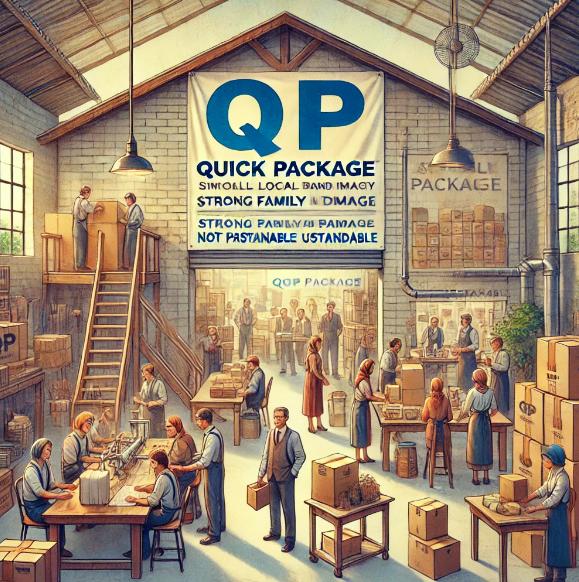Unit 1.5 Growth and evolution
IB Business Management



External growth methods at BIB
Built It Big (BIB): Pioneering Sustainable Packaging Solutions
Since their inception, BIB has been successful in growing internally, expanding their market share, and increasing their annual revenue. With this success, their desires for growth have grown! BIB feels their internal growth and economies of scale may have reached their limit – and they are now looking outwards to increase their growth further!
Bob Seiger has talked about aggressively buying up other competition within the market as a strategy! Seiger did discuss whether they could franchise their brand – but this was quickly dismissed as an external growth method that was more appropriate for other types of business!
Their medium to long term plan is now to expand in the domestic market and a longer-term plan is to examine whether they can expand internationally! They are aware that external growth can produce quicker results than internal growth strategies.
With their clear vision of, ‘to provide innovative packaging that minimizes environmental impact’ BIB have seen some great success. The strong CSR focus and environmental mission is proving popular in the market! This allows consumers to pay a slight premium for packaging but allow themselves to feel happy that at least the packaging they use is sustainable and some of the money goes into a carbon offsetting programme!
Bob Seiger timetabled a management meeting to discuss the following plans:
Purchase Quick Package (QP) which is a smaller local competitor (producing the same types of packaging – though not sustainable) with turnover of around $500,000 a year. They do not wish to be bought and trade successfully with a strong family brand image!
Purchase a paper and card mill (Wright Brothers Production Ltd) that produces the materials they obtain from suppliers! This type of integration would allow them to further reduce their material costs, but also have some market power over other competitors! This would also give certainty about their supply chain – which would reduce the inability to obtain the materials in the quantities they need, which sometimes occurs at peak times of the year! The approximate cost of the purchase would be $5m
Purchase a company (Flash Bag) that develops cutting edge packaging, which is sustainable that supplies fashion houses with exclusive bags. BIB’s interest in this market has been piqued because the added value is larger in this smaller, niche market! The purchase cost of this business is thought to be $750,000
Bob Seiger has also floated the idea of diversifying and reducing risks by getting into other totally unrelated markets, which they may also be successful at! This he argues might be a way to branch out and make sure they are insulated against possible changes in the market! Bob Seiger makes the argument that this is like having ‘a big boat on a big ocean’! One suggestion is getting into building materials (which always seem popular) which are made from recycled or sustainable materials, such as hemp or building blocks with glass and plastic mixed in. Other colleagues think that this sounds like, producing a ‘conglomerate’ which is a huge undertaking and costs far too much money!
Bib have had discussions about buying (acquiring) another firm (Proper Packaging – PP) who declined and then suggested they form a merger! This merger idea was rejected by Bob Seiger who did not want to abandon their strong brand image in order to create a new legal business identify! After this discussion, Bob Seiger and his Board of Directors (BOD) decided that they may try and acquire PP by offering above the market value for their shares and try to persuade their board of directors to agree to the offer! Other associates of BIB have noted that their offer is less likely to be accepted because PP is a LTD and their family ownership is tightly controlled with great pride in the long running family business! Additionally, BIB may not have the financial reserves to buy out PP as they are similarly sized, which could make the purchase cost of shares prohibitively expensive!
QUESTIONS FROM Built It Big (BIB)
- Define the term, synergy with reference to BIB and one other company mentioned in the case study above [2]
- State one example of vertical forwards integration that could be relevant for BIB [2]
- Explain the difference between an acquisition and a takeover [4]
- Explain why franchising as an external method of growth is inappropriate for BIB [4]
- Explain (with reference to BIB) two justifications for an external growth strategy [6]
- Explain what type of external growth strategy, the purchase of QP would be classified as [2]
- Explain what type of external growth strategy, the purchase of Wright Brothers Production Ltd would be classified as [2]
- Explain two types of potential diseconomies of scale BIB may encounter as they pursue external growth strategies [6]
- Explain what type of external growth strategy, the purchase of Flash Bag would be classified as [4]
- Explain two reasons why BIB is unlikely to be successful in acquiring Proper Packaging PP [6]
- Discuss whether BIB should diversify their operations in order to expand or pursue a different growth strategy. [10]



Benefits and drawbacks of mergers and acquisitions (M&A's)
Greater Market Share: Mergers and acquisitions can lead to a combined entity with a larger market share. This increase in market share allows the business to exert greater influence over market trends and pricing, enhancing competitive advantage.
Economies of Scale: M&A often result in economies of scale, meaning the new, larger organization can reduce costs per unit due to increased production levels. This occurs through bulk purchasing, shared resources, and streamlined operations, resulting in higher profit margins.
Synergy: One of the main motivations behind M&A is the potential for synergy, where the combined value and performance of two companies exceed the sum of the separate entities. This can occur through cost savings, revenue enhancement, and improved operational efficiencies.
Survival: For companies struggling to remain competitive, merging with or acquiring another business can be a strategy for survival. The combined resources, customer base, and expertise can help maintain and grow market presence in challenging industries or economic environments.
Diversification: Acquiring a company in a different industry or market can help diversify a company’s business portfolio. This reduces dependency on a single product or market, thus spreading risk and stabilizing revenue streams during market fluctuations or downturns.
Gain Entry into New Markets: M&A can be an effective way for a company to enter new geographical or sector markets without starting from scratch. By acquiring a business already established in a desired market, the acquiring company gains immediate access to local customers, brand reputation, and market knowledge.
Redundancies: M&A often lead to job redundancies as overlapping roles are consolidated to improve efficiency. This can result in significant layoffs, leading to decreased employee morale and potential public backlash. Redundancies can also cause valuable talent to leave the company, affecting operations and innovation.
Conflict: The process of integrating two organizations can lead to internal conflicts among employees and management. Disagreements may arise over differing management styles, strategic priorities, and resource allocation, causing disruptions and decreased productivity.
Culture Clash: M&A can lead to a clash of corporate cultures, especially when the merging companies have distinct values, work ethics, or organizational structures. This culture clash can create resistance to change, hinder the integration process, and lower overall employee engagement.
Loss of Control: In cases where a merger involves a partnership or joint ownership, there may be a loss of control for the original management teams. Shared decision-making can dilute the autonomy of each partner, potentially leading to slower decision processes and conflicting strategic goals.
Diseconomies of Scale: While M&A aim to achieve economies of scale, they can also lead to diseconomies of scale when the new organization becomes too large to manage effectively. Coordination and communication problems may increase, leading to inefficiencies and higher operational costs.
Regulatory Problems: M&A can attract scrutiny from regulatory authorities, particularly if the new entity could create monopolistic power or reduce competition in the market. Regulatory approvals can delay the process and may require modifications or concessions that alter the expected benefits of the merger or acquisition.
Horizontal Integration – the process by which a company expands by acquiring or merging with another company that operates at the same level (often offering similar products and services)!
Benefits of Horizontal Integration:
- Increased Market Share: Merging with or acquiring a competitor can significantly expand a company’s share of the market and reduce competition.
- Economies of Scale: Larger operational capacity can lead to cost reductions per unit as fixed costs are spread over more units of output.
- Synergies: The combined company may benefit from shared resources, expertise, and technologies, leading to enhanced efficiency.
- Enhanced Competitive Advantage: By controlling a larger portion of the market, the company can strengthen its bargaining power with suppliers and customers.
- Access to New Markets: Horizontal integration can help a business enter new geographic regions or segments.
Drawbacks of Horizontal Integration:
- Regulatory Scrutiny: Large mergers may attract attention from regulatory authorities due to concerns about monopolistic practices or reduced competition.
- Integration Challenges: Combining different corporate cultures, systems, and processes can be complex and may result in inefficiencies or conflicts.
- Increased Risk: Over-reliance on a particular industry or product line can make the company more vulnerable to industry downturns.
- Potential Diseconomies of Scale: Beyond a certain size, additional complexities and inefficiencies can emerge, making management more challenging.
- High Costs: The financial outlay for acquisitions or mergers can be significant, potentially leading to increased debt or the need for substantial financial resources.
Horizontal integration can be an effective strategy for growth, but it requires careful consideration of both the strategic benefits and the associated risks.
Vertical Integration – the process by which a company expands its operations into different stages of its supply chain.
This can be backward integration (acquiring or merging with suppliers)
or
forward integration (acquiring or merging with distributors or retailers).
Benefits of Vertical Integration:
- Cost Control: By controlling more of the supply chain, a business can reduce costs related to sourcing materials or distributing products.
- Increased Control: Greater control over the production process and quality assurance helps maintain consistent product standards.
- Reduced Reliance on External Suppliers: Integrating suppliers or distributors into the company’s operations can minimize disruptions and dependency on third parties.
- Improved Coordination: Aligning supply chain processes can lead to enhanced efficiency and streamlined operations.
- Higher Barriers to Entry: Controlling key resources or distribution channels can create competitive advantages and make it more difficult for new entrants to compete.
Drawbacks of Vertical Integration:
- Significant Capital Investment: Expanding operations into new stages of the supply chain requires substantial financial resources, which may strain the company’s budget.
- Reduced Flexibility: Vertical integration can limit the company’s ability to adapt to changes in the market or switch to more cost-effective suppliers or distributors.
- Complex Management: Managing a larger and more diverse set of operations can increase organizational complexity and pose significant challenges.
- Potential for Diseconomies of Scale: Overextending into different stages of the supply chain may result in inefficiencies and increased costs if not managed well.
- Risk Concentration: By focusing on a single supply chain, the company may become more vulnerable to sector-specific risks.
Vertical integration can help a business gain a stronger competitive position and secure supply chains, but it must be carefully planned to avoid potential inefficiencies and high costs.
Conglomerates refer to large corporations that own a collection of diverse businesses across various industries. These businesses may be unrelated in terms of products or services but operate under the same parent company. This strategy is known as diversification.
Benefits of Conglomerates:
- Risk Diversification: By operating in multiple industries, a conglomerate can spread risk across different markets. If one sector underperforms, others may compensate, providing overall stability.
- Capital and Resource Allocation: Conglomerates can allocate resources and capital more efficiently within their portfolio, redirecting them to areas with the highest growth potential.
- Economies of Scope: Sharing resources such as technology, managerial expertise, or marketing channels across different business units can lead to cost savings.
- Increased Market Power: The parent company’s size can enhance its bargaining power with suppliers and access to financing at better rates.
- Innovation Opportunities: The cross-pollination of ideas between unrelated sectors can foster innovation and new product development.
Drawbacks of Conglomerates:
- Management Complexity: Managing a diverse set of businesses in different industries can lead to inefficiencies and challenges in maintaining a cohesive strategy.
- Dilution of Core Competencies: A conglomerate may lose focus on its original core competencies as it expands into unrelated areas, potentially reducing its competitive edge in the primary market.
- Bureaucracy: Large conglomerates can suffer from bureaucratic inefficiencies that slow decision-making and reduce responsiveness to market changes.
- Financial Risks: While diversification reduces risk, poor performance in a significant subsidiary can still impact the overall financial health of the conglomerate.
- Potential for Lower Shareholder Value: The stock market may discount the value of conglomerates due to a perception of inefficiency or difficulty in understanding the conglomerate’s overall business model.
Conglomerates can be powerful in leveraging diversified growth and spreading risk, but they require strong, skilled management to handle the complexities and maintain strategic alignment across disparate business units.
